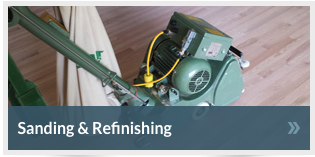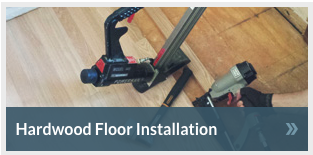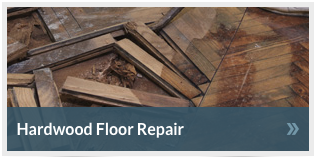How To Remove Sanding Marks On Hardwood Floors
Hardwood floors are an elegant addition to any home, exuding warmth and character. However, maintaining their pristine appearance requires proper care and attention, especially when it comes to sanding. Sanding is a crucial step in the refinishing process, but if not done correctly, it can leave unsightly sanding marks that mar the beauty of your floors. If you’re a homeowner in Baltimore County, MD, dealing with this issue, don’t worry. This guide will help you understand how to effectively remove sanding marks and restore the flawless finish of your hardwood floors.
Answering The Question: How To Remove Sanding Marks On Hardwood Floors
Understanding Sanding Marks
Sanding marks are typically caused by improper sanding techniques or using the wrong type of sandpaper. They appear as visible scratches or grooves on the surface of the wood, detracting from its smooth finish. These marks can be particularly noticeable when light hits the floor at certain angles, highlighting the imperfections.
Steps to Remove Sanding Marks
1. Identify the Problem Areas
Before you begin, thoroughly inspect your hardwood floors to identify all the areas with sanding marks. Use natural light or a strong flashlight to reveal any imperfections. Mark these areas with painter’s tape to ensure you don’t miss any spots during the repair process.
2. Gather Your Tools and Materials
To remove sanding marks, you’ll need the following tools and materials:
- Fine-grit sandpaper (120-220 grit)
- Sanding block or orbital sander
- Vacuum cleaner
- Tack cloth
- Hardwood floor cleaner
- Polyurethane or other wood finish
3. Choose the Right Sandpaper
Selecting the appropriate grit sandpaper is crucial for effectively removing sanding marks without causing further damage. Start with a finer grit, such as 120 or 150, and gradually move to 220 grit for a smooth finish. Avoid using coarse sandpaper, as it can create deeper scratches.
4. Sand the Affected Areas
Using a sanding block or orbital sander, gently sand the areas marked with painter’s tape. Move the sander in the direction of the wood grain to avoid creating new scratches. Apply consistent pressure and check your progress frequently. The goal is to blend the sanding marks with the surrounding wood, creating a uniform surface.
5. Clean the Surface
After sanding, thoroughly clean the floor to remove all dust and debris. Use a vacuum cleaner to suck up the larger particles, and then wipe the surface with a tack cloth to pick up any remaining dust. This step is essential to ensure a smooth and clean finish when you apply the new coat of polyurethane or wood finish.
6. Apply a Wood Finish
Once the floor is clean and dust-free, it’s time to apply a new coat of polyurethane or your preferred wood finish. This step not only protects the wood but also enhances its natural beauty. Use a high-quality brush or applicator to apply the finish evenly, following the manufacturer’s instructions. Allow sufficient drying time before walking on the floor or placing furniture back in the room.
Preventing Future Sanding Marks
Use the Right Equipment
Investing in high-quality sanding equipment and tools can make a significant difference in achieving a smooth finish. Ensure your sander is in good condition and that the sandpaper is suitable for hardwood floors.
Follow Proper Sanding Techniques
Always sand in the direction of the wood grain and use even, consistent pressure. Avoid tilting the sander, as this can create uneven surfaces and deeper scratches.
Progress Through Sandpaper Grits Gradually
Start with a coarser grit to remove old finish and imperfections, then gradually progress to finer grits. Skipping grits can leave behind scratches that are difficult to remove.
Regular Maintenance
Keep your hardwood floors in top condition by regularly cleaning and maintaining them. Use rugs or mats in high-traffic areas to protect the wood from scratches and wear. Additionally, avoid dragging heavy furniture across the floor to prevent deep gouges.
When to Call a Professional
While DIY methods can be effective for minor sanding marks, some situations may require the expertise of a professional. If the sanding marks are extensive, deep, or if you’re unsure about tackling the project yourself, it’s best to seek professional help. At Flawless Floors in Perry Hall, MD, our team of skilled technicians can assess the condition of your hardwood floors and provide expert solutions to restore their flawless finish.
Contact Flawless Floors Today For Hardwood Floor Installations in Baltimore County, MD
If you’re a resident of Baltimore County, MD, and need assistance with removing sanding marks or installing new hardwood floors, look no further than Flawless Floors. Our experienced team is dedicated to delivering top-notch service and ensuring your hardwood floors look their best. Whether it’s refinishing, repairing, or installing new floors, we have the expertise to meet your needs. Contact us today to schedule a consultation and take the first step toward achieving the beautiful, flawless hardwood floors you’ve always dreamed of. Let Flawless Floors transform your home with our professional and reliable flooring solutions. Don’t wait – call us now and experience the difference!

Sanding & Refinishing

Installation

